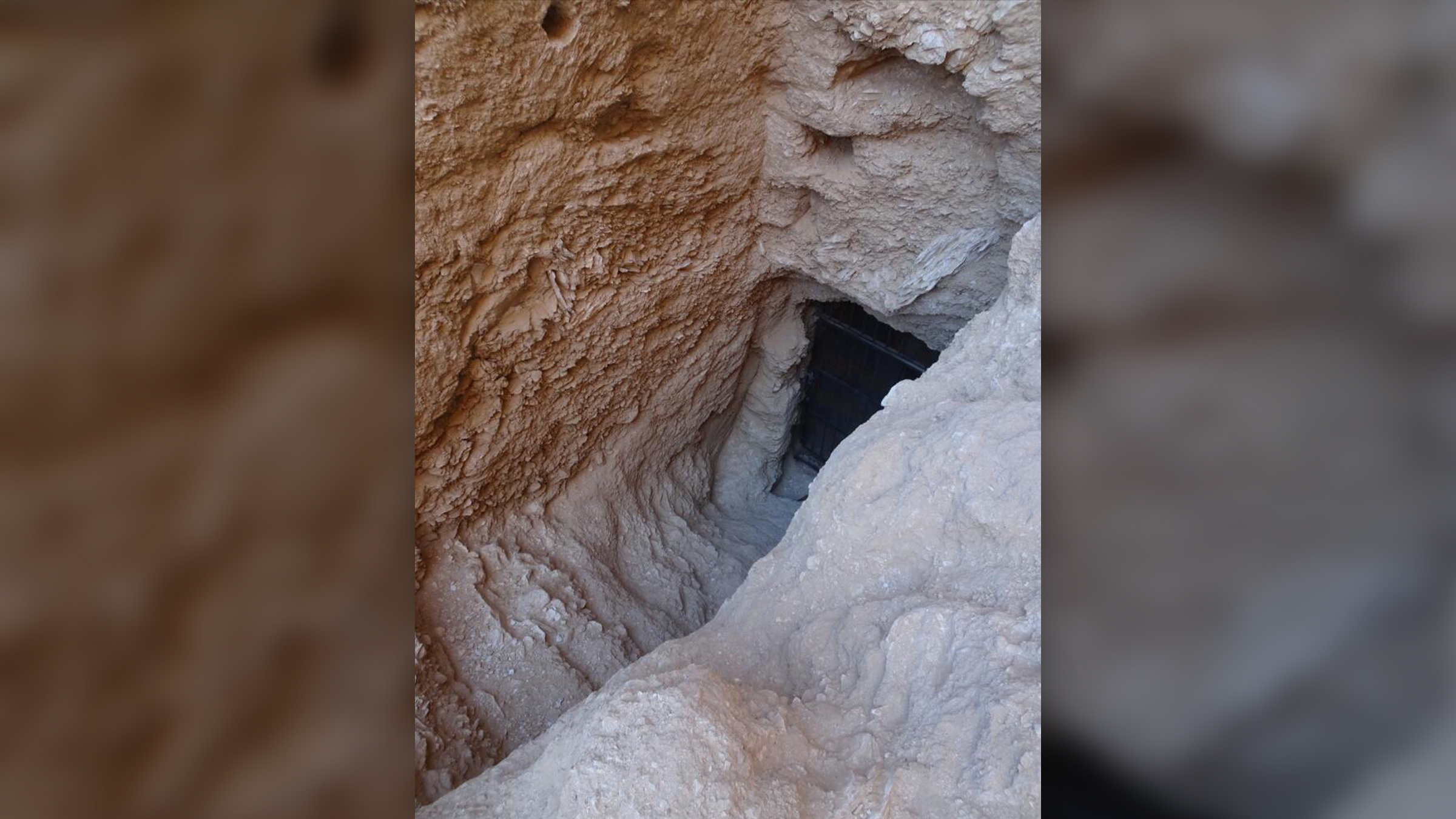Royal tomb discovered near Luxor dates to time when female pharaoh co-ruled ancient Egypt
The tomb dates from a period when ancient Egypt was co-ruled by the female pharaoh Hatshepsut and Thutmose III.

Archaeologists in Egypt have discovered a 3,500-year-old royal tomb near Luxor. The tomb was likely constructed at a time when Hatshepsut, a female pharaoh, co-ruled ancient Egypt.
"Partial inscriptions and ceramic evidence suggest this was constructed during the joint-reign of Thutmose III and Hatshepsut," archaeologists said in a statement.
The tomb was excavated by a team of archaeologists from the Ministry of Tourism and Antiquities and the New Kingdom Research Foundation mission, which is affiliated with the MacDonald Institute for Archaeological Research at the University of Cambridge. The team found the tomb in October 2022 while exploring an area near Luxor called the Wadi Gabbanat el-Qurud, which is located near the Valley of the Kings.
Thutmose III was a child, possibly only 2 years old, when he came to the throne around 1479 B.C., and Hatshepsut, his stepmother, acted as his regent and later co-ruler until her death around 1458 B.C. Their joint reign saw the construction of a temple at Deir el-Bahri and a successful Egyptian expedition to a place known as Punt — which may have been located in East Africa.
Related: 10 times ancient Egyptian discoveries awed us in 2022
The newfound tomb contains multiple burials, and "the architecture, as currently understood, indicates the tomb was altered several times shortly after it was first constructed," the team said in the statement.
The archaeologists aren't certain who the tomb was originally built for. "Surviving decoration and the size of the few accessible chambers currently point to a royal burial of some importance, most likely, given the location [near the Valley of the Kings], the burial of a great royal wife and several children of a Thutmosid king," the team said in the statement. It’s not clear how many human remains there are.
Get the world’s most fascinating discoveries delivered straight to your inbox.
The tomb was badly damaged by flooding in ancient times. "Repeated flooding has completely filled the main axis of the tomb with concrete-hard debris and has caused the ceilings of the tomb to weaken and collapse," the team said in the statement.
Excavation and analysis of the tomb's remains are ongoing. "It will take several seasons to clear the chambers and make the tomb safe," the statement said. Members of the team did not return requests for comment by time of publication.
A number of recent archaeological discoveries have been made near Luxor, including a cache of priests, giant ram statues found near Karnak Temple and the mummy of a teenager who was buried with fine jewelry.

Owen Jarus is a regular contributor to Live Science who writes about archaeology and humans' past. He has also written for The Independent (UK), The Canadian Press (CP) and The Associated Press (AP), among others. Owen has a bachelor of arts degree from the University of Toronto and a journalism degree from Ryerson University.
 Live Science Plus
Live Science Plus






